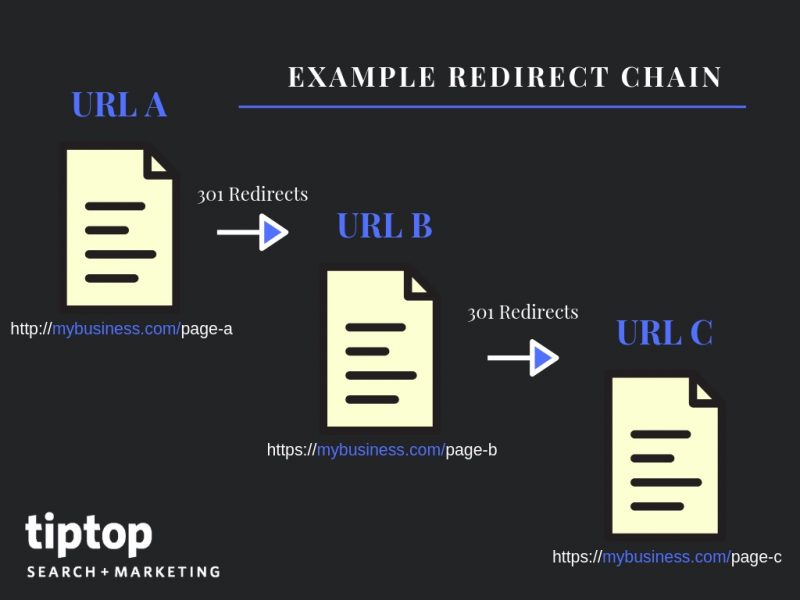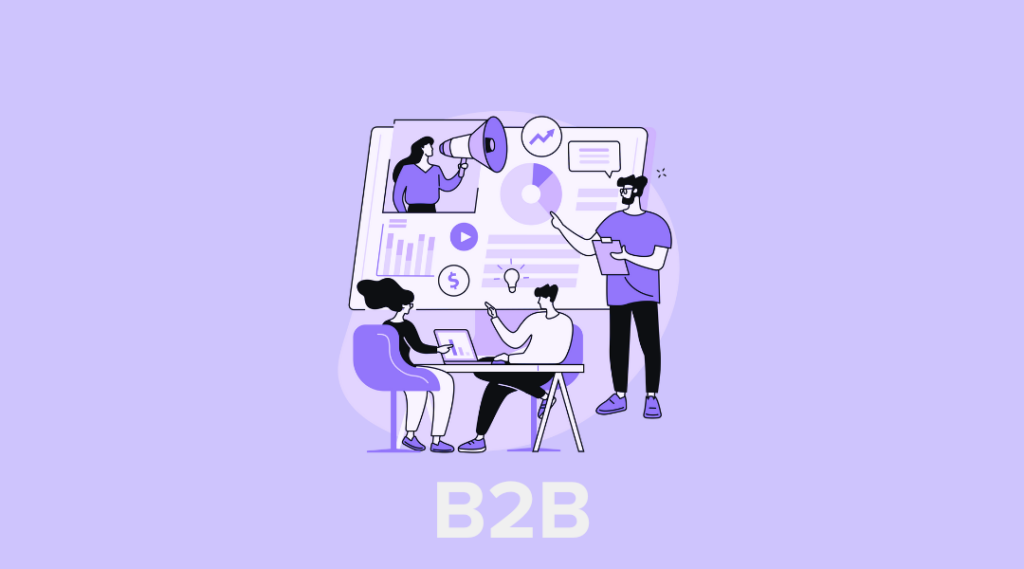A 301 redirect can be a necessary part of SEO. As a site grows, services come and go, and products change, a 301 is the recommended redirect to pass equity and traffic from an old URL to a new URL. It also (importantly) helps search engine crawl bots discover the change. This normal practice is very useful and great when used correctly — but many times, unknowingly to the typical site owner, redirect chains start to happen and this is where it all goes horribly wrong.
What Are Redirect Chains?
A redirect chain happens when you redirect a URL to a new URL, then you redirect that new URL to another URL and so on. For example: URL/page-a gets redirected to URL/page-b, then URL/page-b gets redirected to URL/page-c which then gets redirected to URL/page-d. A redirect chain has occurred.

Redirect chains are typically created over time. There are several ways redirect chains can happen but a couple of the more common ones are:
- A change in URL structure with new website build. Your old URL format could have been URL/service/page-a and with the launch of your new site you’ve changed to URL/services/page-a. This seemingly simple change creates the first redirect and if you redirect this same page to another updated URL a chain has started.
- Your CMS (content management system) creates redirects without you realizing what is happening. With the best of intentions you keep changing a page URL and title to create a more optimized service page, with that the URL slug changes. The CMS automatically adds the redirect. You don’t think about it but over the space of 3-4 years and multiple changes, all of these redirects have stacked to create a chain.
Do Redirect Chains Hurt Your SEO?
Yes. Redirect chains hurt SEO by slowing your site speed, wasting crawl budget and preventing equity from effectively passing between pages. The greater the amount of redirect chains and the longer the chain, the more noticeable the impact on your sites performance will be.
Site Speed: Each redirect slows down the time it takes for a page to load. This causes the user to wait longer to navigate between pages on your site. A user will not always wait around for that page to load. Google uses site speed as a ranking factor. If your site is slow to load this will hurt your ranking.
Crawling and Indexing: Redirect chains waste your crawl budget. Google does not assign an infinite crawl to your site, if you’re wasting your crawl sending bots into long redirect chains valuable pages could be getting missed. Also, Googlebot is not going to crawl through all the redirects, by the third or fourth link in the chain Google will stop following the redirects and move on.
Page Equity: When you redirect from one page to another you’re passing page equity from backlinks and internal links to the new page along with some other ranking values. We know that a single redirect transfers about 85% off the original page equity to the new page. Each time you add a redirect, you’re reducing the page equity that passes to the live page. If you have 4+ redirects in a chain your new page equity is going to be considerably less than the original page. This can impact your ability to rank that page.
This is a few of the biggest reasons why you should do all you can to prevent redirect chains from happening. Let’s look at the steps you’ll need to take to fix your redirect chain.
How to Fix A Redirect Chain?
- Find the redirect chains in your site.
- Fix internal linking to reflect the final URL.
- Fix the redirect chain with one-one redirects.
Finding the redirect chains on your site
The quickest and easiest way to find redirect chains is by crawling your site with tools like: SEMRush, Screaming Frog, or Raven. These tools can quickly crawl your site and discover technical errors to be addressed. You can also get a free site audit from tiptop and we’ll walk you through the technical items that are limiting your ranking potential.
Fix internal links
Once you have identified the redirect chains in your site you’re going to want to fix the internal links in your site. This could be links from the navigation, footer links, or links in content. You’ll likely find in content you’ve linked to the many versions of a page URL creating redirect chains of various lengths from content. This is slowing your internal site speed and causing Google to not crawl your site effectively or efficiently. You’ll want to update these internal links to the now final live URL.
Fix the redirect chain
Each URL in the chain should point directly to the final live URL. For example an existing redirect chain like:
URL/page-a [301] URL/page-b [301] URL/page-c [301] URL/page-d [200]
would become:
URL/page-a [301] URL/page-d [200]
URL/page-b [301] URL/page-d [200]
URL/page-c [301] URL/page-d [200]
By creating a single 301 redirect from each of the old URLs to the final live URL it will make your site easier to crawl, increase site speed, and allow equity to pass more directly to the page. You don’t want to just delete old URLs, this will create 404s and potentially cost you equity from backlinks to old versions of the URL.
Redirect chains if left unaddressed will plague your site and reduce your ranking potential. Find them, fix them, and create a plan for future redirects that everyone on the team should follow.
Whether you want to talk about redirect chains, some other SEO issue, or are looking for a SEO strategy to help you win online, we’d love to connect.






